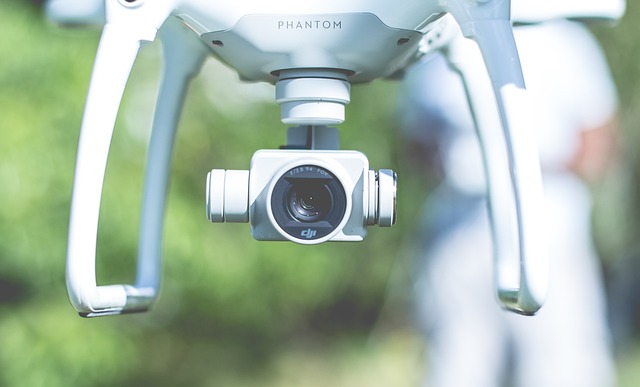Counterintelligence works to protect organizations and nations from hostile forces, while intelligence gathers information on such threats. While they both work together to ensure safety, their individual functions are distinct: counterintelligence focuses on the prevention of hostile activities while intelligence focuses on obtaining data and analysis related to these activities.
What is intelligence?
(Image by Peter Wiberg from Pixabay )

Intelligence is critical to national security, as it provides governments with the information and insights needed to identify and respond to potential threats and risks. National security intelligence refers to the collection, analysis, and dissemination of information that is relevant to the protection of a country’s people, institutions, infrastructure, and interests.
Intelligence agencies play a key role in gathering and analyzing information from a range of sources, including human intelligence, signals intelligence, imagery intelligence, and open-source intelligence. They may also work closely with law enforcement agencies and the military to identify and respond to threats to national security.
Intelligence information can be used to support a range of national security activities, including counterterrorism, counterintelligence, border security, cybersecurity, and disaster response. It can also be used to inform policy decisions and diplomatic initiatives, as well as to support military operations.
The effective use of intelligence is essential to national security, as it enables governments to anticipate and respond to threats before they can materialize. However, intelligence activities must be conducted in a manner that respects civil liberties and privacy rights, and is subject to appropriate oversight and accountability mechanisms.
What is counterintelligence?
(Image by Peter Wiberg from Pixabay)

Counterintelligence is the set of activities designed to prevent foreign intelligence services or other adversaries from successfully gathering and collecting sensitive information about a country’s government, military, businesses, or citizens. Counterintelligence is a critical component of national security and involves a range of tactics and techniques aimed at detecting and thwarting espionage and other intelligence-gathering activities.
Counterintelligence efforts may involve both defensive and offensive measures, including monitoring and assessing threats, conducting investigations and background checks, developing and implementing security protocols, and engaging in active deception and disinformation operations to mislead or confuse adversaries.
Some specific examples of counterintelligence activities include conducting background checks on government employees and contractors, monitoring foreign diplomats and intelligence operatives, investigating cyberattacks and other forms of espionage, and developing and implementing policies and procedures to safeguard sensitive information.
The difference between intelligence and counterintelligence
The terms “intelligence” and “counterintelligence” are often used interchangeably, but they actually refer to two different types of information gathering. Intelligence refers to the collection and analysis of information in order to gain an understanding of an opponent or potential threat. Counterintelligence, on the other hand, is the collection and analysis of information in order to thwart the activities of an opponent or enemy.
Both intelligence and counterintelligence are important tools in the fight against crime and terrorism. Intelligence helps law enforcement agencies identify potential threats and gather information about them before they can strike. Counterintelligence allows law enforcement agencies to disrupt the plans of terrorists and criminals before they can carry out their attacks.
The two disciplines are similar in many ways, but there are also some key differences. Intelligence focuses on gathering information about an opponent in order to understand their intentions and capabilities. Counterintelligence, on the other hand, is more focused on disrupting the plans of an opponent and preventing them from carrying out their attack.
In order to be effective, both intelligence and counterintelligence require a great deal of planning and coordination. Intelligence analysts must be able to sift through large amounts of data and identify relevant pieces of information. They must also be able to draw conclusions from this information and develop a clear understanding of the threat. Counterintelligence analysts must be able to identify potential vulnerabilities in an opponent’s plan and find ways to exploit them. They must also have a thorough knowledge of criminal techniques and how to prevent them from being
How intelligence and counterintelligence work together
In the world of intelligence and counterintelligence, the two terms are often used interchangeably. However, there is a big difference between the two. Intelligence is the gathering of information for national security purposes. This can be done through human intelligence (HUMINT), signals intelligence (SIGINT), imagery intelligence (IMINT), or measurement and signature intelligence (MASINT). Counterintelligence, on the other hand, is the thwarting of enemy espionage activities. This can be done through counter-espionage, which is stopping spies from stealing secrets, or counterespionage, which is stopping hostile intelligence services from operating in your country.
What is the purpose of intelligence?
The purpose of intelligence is to support policymakers by providing them with the best possible information about foreign governments, organizations, and individuals. This information can be used to make informed decisions about national security issues, such as how to respond to a potential threat.
Intelligence agencies use a variety of methods to collect information, including human sources, intercepting communications, and open-source analysis. This information is then analyzed by experts who attempt to identify patterns and trends that can provide insight into the intentions and capabilities of foreign entities.
What is the purpose of counterintelligence?
Counterintelligence is the process of identifying and countering foreign intelligence threats. It is a critical part of national security and helps to protect against espionage, sabotage, and terrorism.
The purpose of counterintelligence is to protect against foreign intelligence threats and vulnerabilities. It helps to identify and track enemy spies, understand their motivations and objectives, and thwart their plans. Counterintelligence also plays a role in counterterrorism efforts by providing information that can help prevent attacks.
What are the types of counterintelligence?
There are two types of counterintelligence: active and passive.
Active counterintelligence is when you try to find out what the other side is doing (their intelligence) and then do something to stop it or thwart it.
Passive counterintelligence is simply trying to protect your own secrets and not let the other side find out what you are doing (your intelligence).
Does the CIA do counterintelligence?
In general, counterintelligence is conducted by government agencies in order to protect national security secrets and prevent hostile nations or organizations from acquiring sensitive information. The CIA is one of many organizations that engage in counterintelligence activities.
The CIA’s primary mission is to collect intelligence on foreign governments, individuals, and organizations in order to help the US government better understand the world around them and make informed decisions. While the CIA does engage in some counterintelligence activities, this is not its primary focus.
The FBI is responsible for the majority of counterintelligence activities in the United States. The FBI’s Counterintelligence Division works to identify and neutralize foreign intelligence threats to the US. They also work to prevent the unauthorized disclosure of classified information and theft of intellectual property.
What is the history of intelligence and counterintelligence?
The history of intelligence and counterintelligence is long and complex, with roots dating back to ancient times. In its most basic form, intelligence gathering is a means of acquiring information about an adversary or potential adversary, while counterintelligence is a way of thwarting the enemy’s intelligence efforts.
One of the earliest examples of intelligence gathering comes from Sun Tzu’s The Art of War, in which the Chinese military strategist advocated for the use of spies to gain information about one’s enemies. Over time, the methods and techniques used for intelligence gathering have become more sophisticated, but the basic goal remains the same: to learn as much as possible about an opponent in order to gain an advantage.
During World War II, both Allied and Axis powers made extensive use of intelligence and counterintelligence operations. The British government set up special organizations like the Secret Intelligence Service (MI6) and the Government Code and Cypher School (GC&CS) to collect and decode enemy communications. The United States also established several new intelligence agencies during this period, including the Office of Strategic Services (OSS) and the Central Intelligence Agency (CIA).
After the war, many of these wartime agencies were disbanded or absorbed into other organizations. However, intelligence-gathering remained a vital part of national security for all major powers. In recent years, advances in technology have dramatically changed how intelligence is collected and analyzed. Today, digital data plays a major role in almost all aspects of intelligence work, from intercepted communications to








